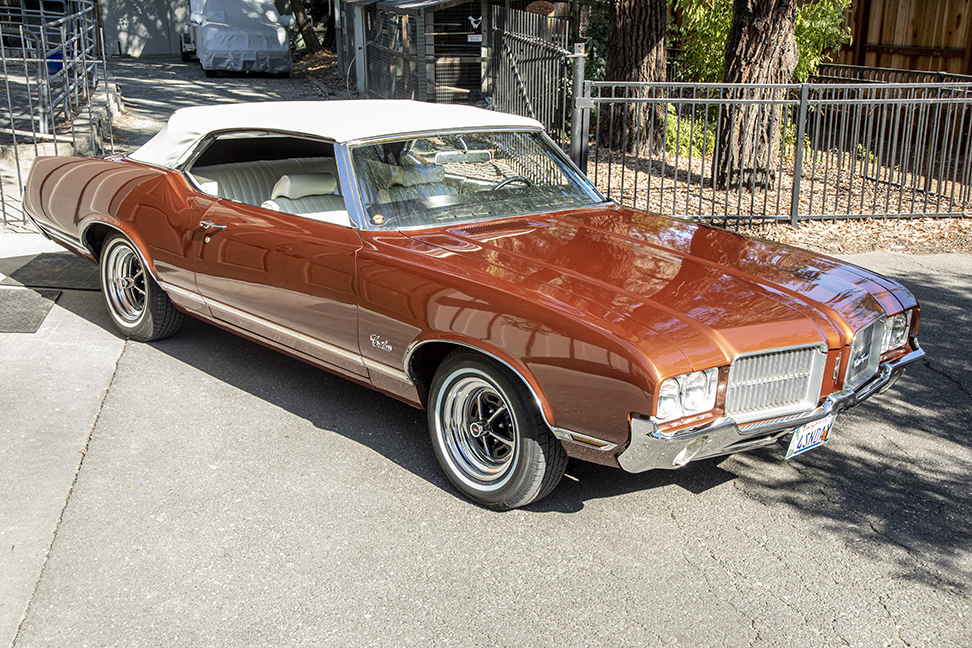Today, I am fortunate to share with you the car love story of Chris Oldag, a boy from northern Florida whose mother spawned his love of high-powered cars. She worked nightshifts managing a highway motel about an hour’s drive north of Daytona. It was in this motel’s parking lot where Chris discovered super-cars—meaning race cars, that is. It was in that parking lot that NASCAR (National Association for Stock Car Auto Racing) teams would occasionally stop over on their way to or from the Daytona races with race cars sitting on the open trailers.
Back in the 60s when he was a little kid (born 1958), Chris and his older brothers got to see the racetrack crews working on the old race cars, and were able to watch them drive the cars up and down the freeway frontage roads along Highway 95. This exposure to the race car world sparked his interest that led to his love of high-performance cars.
Added to this was the fact that he had a couple of older brothers who were, what he calls, motor-heads, whose interest was all about cars as well. After they returned from their service in Vietnam, they were constantly debating as to which car was better; Chevy versus Ford, Dodge versus Plymouth. Also, at that time in their life, something new had come to the foreground; drag racing, along with the new term “muscle-cars,” both of which reigned tantamount in their minds. His brothers had an assortment of old cars they turned from jalopies into less safe and much lighter and faster vehicles. Their jargon permeating the household atmosphere, so you can see how the love of hot rods and modified muscle cars became implanted on Chris’s young brain.
Eventually in 1970, the family moved to the Midwest, where hot-rods were popular. Due to the fact that the weather in the mid-west often has very long, cold winters, hot-rod owners often worked on their cars in their garages most of that time. In addition, Chris’s family lived close to a couple of large wrecking yards where lots of spare time was spent rummaging through those salvage yards looking for replacement parts.
By 1971, the same year as Chris’s current Oldsmobile, legislative changes marked the end of the muscle car era because after that time, new federal regulations required cars to burn unleaded fuel. That meant lower compression engines and lower compression meant less power, which, when tied with the oil crisis of 1976, put nails in the coffin of the American muscle-cars.
However, as if America was not yet ready to let go of the “muscle-car,” a purely escapist movie opened in 1977, in thousands of theaters across the country that featured a black 1977 Pontiac Trans Am Firebird, starring Burt Reynolds and Sally Fields, in Smokey and the Bandit. This madcap movie involved little more than a 28-hour Texarkana round-trip police-chase condensed into 96 minutes on film. (As a side note, the “Smokey & the Bandit promo Trans Am car” was eventually sold at auction in 2016 for a mere $550,000. A pretty handsome sum!)

Years later, in or about 1998, Chris bought an old Jeep Comanche from a neighbor which rekindled his interest in restoring and rebuilding cars again. Next, he bought a Miata, followed by an Infiniti G37 coupe, which of course, was a high-performance model. Right about that time, Chris became a docent at the Blackhawk Museum as he had recently retired from his job and had a little more time on my hands. Luckily. Chris says, “my wife saw a notice by the Blackhawk Museum of their ongoing recruiting effort. She reached out to them, and they informed her that they had a training class that was available, provided that those who signed up for the class, would agree to serve at the museum a minimum of five hours a week.” Chris smiled and said “it was a lot like running into the brother you never had, or never met, who thinks the same way you think and reacts the same way you do and hangs onto every detail of collecting, repairing, driving and understanding these collectors’ cars. It was really fascinating and I’m now literally at my 10th anniversary as a docent.”
“How many cars do I own currently? I have my 1971 Olds Cutlass that I bought from another Blackhawk Museum docent, and more recently I found a 65 Mustang convertible that is a ‘barn-find’ car, which I intend to bring back to collectible condition with lots of love and hard work in the restoration process. In my work today, at Pacific Service Credit Union in Walnut Creek, my love of cars is furthered by my knowledge of collectible cars and cars in general. I spend a certain amount of my time in the process of financing what my company might call ‘special-interest’ cars. We provide a service for the cars that we will accept, providing a financing rate that is much more attractive than what other finance companies are currently charging for comparable collectible used cars.” He cautions however, that they don’t finance projects cars or junk, and there must be a clear title on a car that is at least in drivable condition. In addition, it has to be registered in California, is insurable, and the purchase price must be at least 20% of the vehicle’s value. In in summary, he says, “I have to say that I emphatically love collectible cars, and the company of others who share the same love.”
Leave a Reply